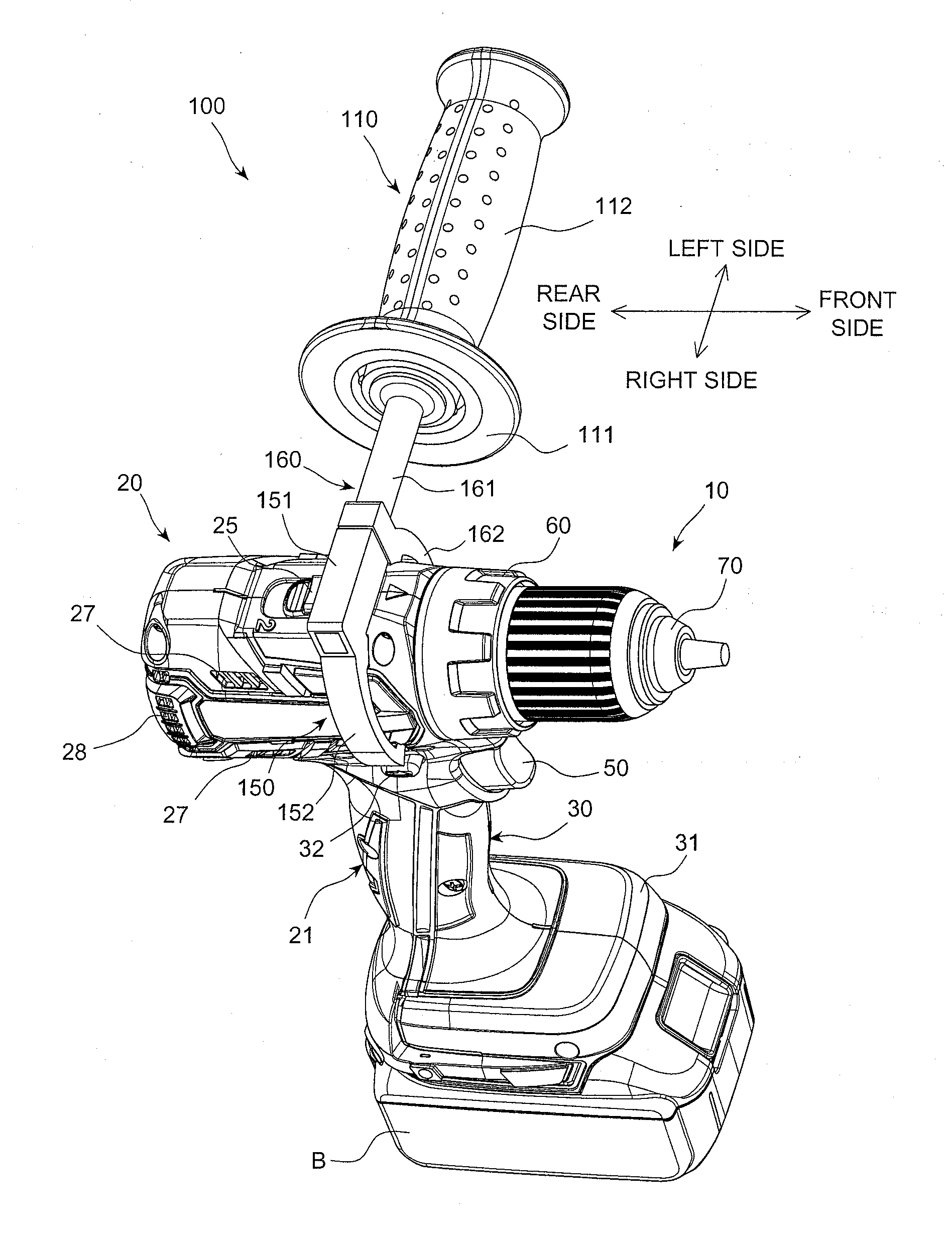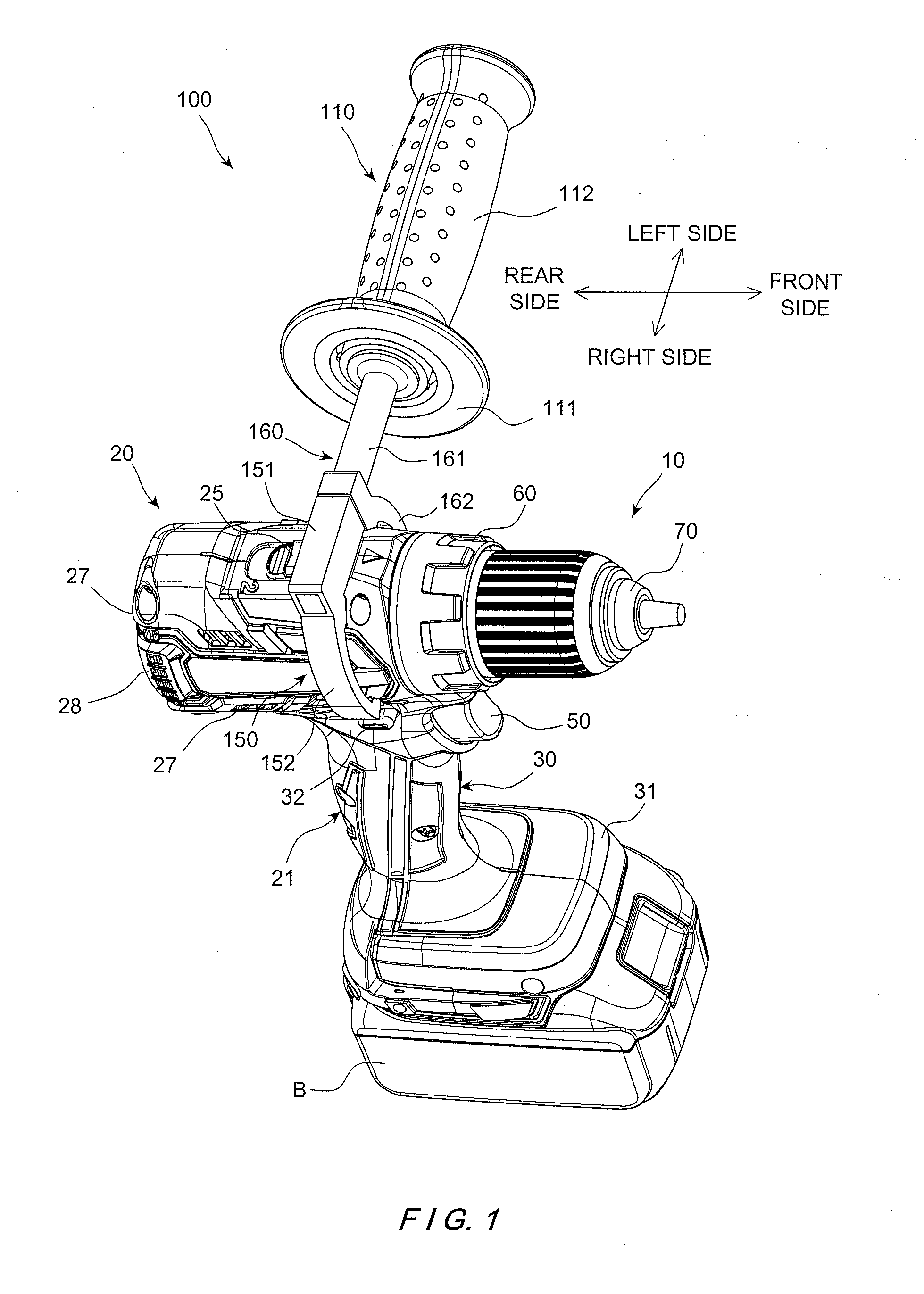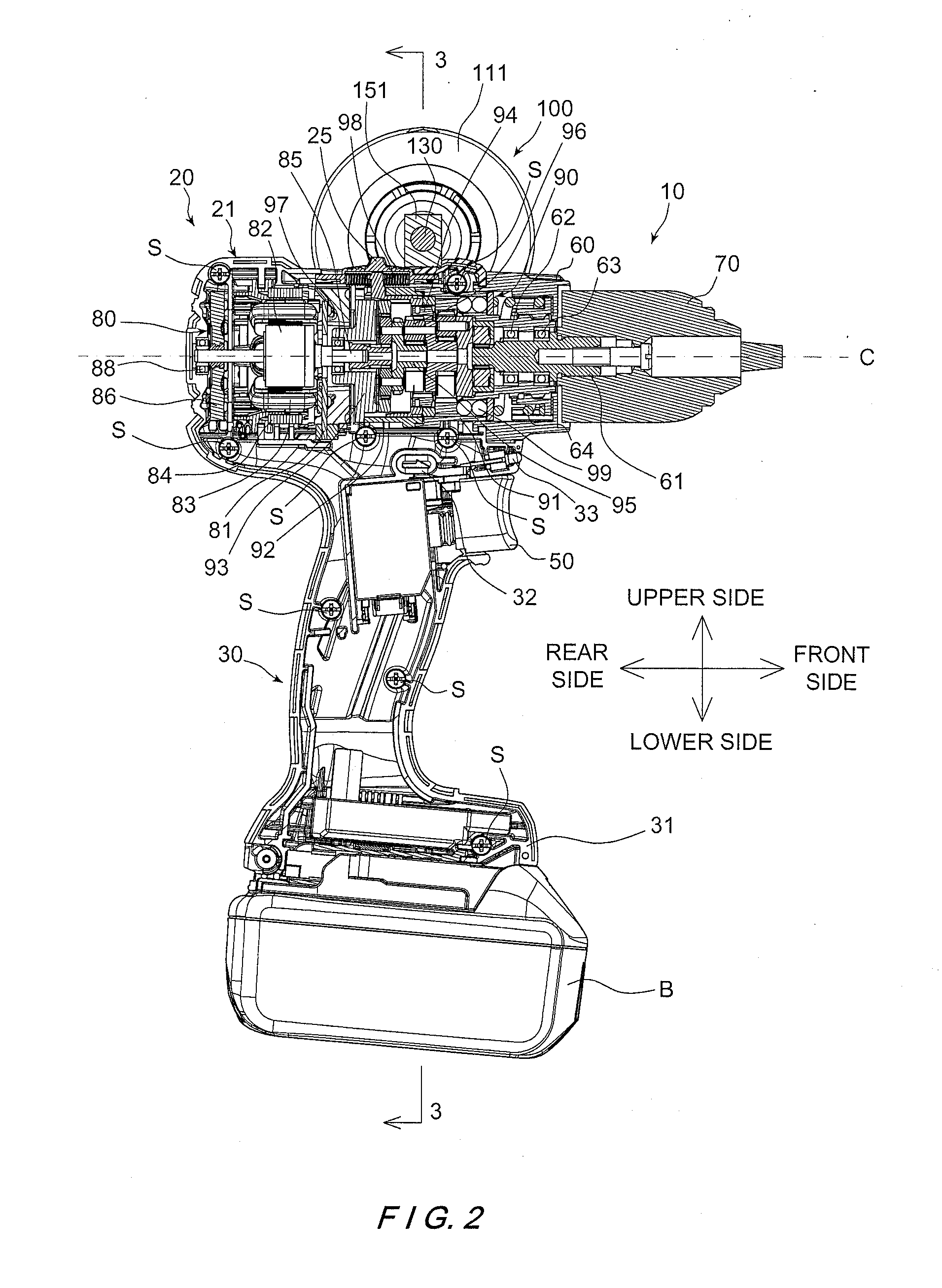Power tool assembly, power tool, and auxiliary handle member
a technology of auxiliary handle and power tool, which is applied in the direction of manufacturing tools, portable power-driven tools, drilling machines, etc., can solve the problems of auxiliary handle falling off from the housing of the power tool, difficult to properly use the power tool in a small space, and difficulty in gaining sufficient leverage to properly operate the power tool, etc., to achieve the effect of increasing the longitudinal length of the housing
- Summary
- Abstract
- Description
- Claims
- Application Information
AI Technical Summary
Benefits of technology
Problems solved by technology
Method used
Image
Examples
second embodiment
[0065]Referring now to FIGS. 8-11, a power tool assembly including the power tool 10 and an auxiliary handle member 200 in accordance with a second embodiment will now be explained. In view of the similarity between the first and second embodiments, the parts of the second embodiment that are identical to the parts of the first embodiment will be given the same reference numerals as the parts of the first embodiment. Moreover, the descriptions of the parts of the second embodiment that are identical to the parts of the first embodiment may be omitted for the sake of brevity.
[0066]The power tool assembly according to the second embodiment differs from the first embodiment in the structure of the auxiliary handle member 200. In other words, in the second embodiment, the auxiliary handle member 200 is selectively coupled to the power tool 10 to provide a secondary grip position for a user to support the power tool 10 with both hands during operation.
[0067]Referring now to FIGS. 8 and 9...
third embodiment
[0082]Referring now to FIGS. 12-15, a power tool assembly including the power tool 10 and an auxiliary handle member 300 in accordance with a third embodiment will now be explained. In view of the similarity between the first, second and third embodiments, the parts of the third embodiment that are identical to the parts of the first or second embodiment will be given the same reference numerals as the parts of the first or second embodiment. Moreover, the descriptions of the parts of the third embodiment that are identical to the parts of the first or second embodiment may be omitted for the sake of brevity.
[0083]The power tool assembly according to the third embodiment differs from the first embodiment in the structure of the auxiliary handle member 300. In other words, in the second embodiment, the auxiliary handle member 300 is selectively coupled to the power tool 10 to provide a secondary grip position for a user to support the power tool 10 with both hands during operation.
[0...
fourth embodiment
[0105]Referring now to FIGS. 16-26, a power tool assembly including the power tool 10′ and an auxiliary handle member 400 in accordance with a fourth embodiment will now be explained. In view of the similarity between the first and fourth embodiments, the parts of the fourth embodiment that are identical to the parts of the first embodiment will be given the same reference numerals as the parts of the first embodiment. Moreover, the descriptions of the parts of the fourth embodiment that are identical to the parts of the first embodiment may be omitted for the sake of brevity. The parts of the fourth embodiment that differ from the parts of the first embodiment will be indicated with a single prime (′).
[0106]In the fourth embodiment, the power tool 10′ is a cordless driver drill. The power tool 10′ differs from the power tool 10 illustrated in the first embodiment except for the auxiliary handle member mounting structure provided in the power tool 10′. More specifically, as shown in...
PUM
| Property | Measurement | Unit |
|---|---|---|
| circumference | aaaaa | aaaaa |
| distance | aaaaa | aaaaa |
| frictional forces | aaaaa | aaaaa |
Abstract
Description
Claims
Application Information
 Login to View More
Login to View More - R&D
- Intellectual Property
- Life Sciences
- Materials
- Tech Scout
- Unparalleled Data Quality
- Higher Quality Content
- 60% Fewer Hallucinations
Browse by: Latest US Patents, China's latest patents, Technical Efficacy Thesaurus, Application Domain, Technology Topic, Popular Technical Reports.
© 2025 PatSnap. All rights reserved.Legal|Privacy policy|Modern Slavery Act Transparency Statement|Sitemap|About US| Contact US: help@patsnap.com



